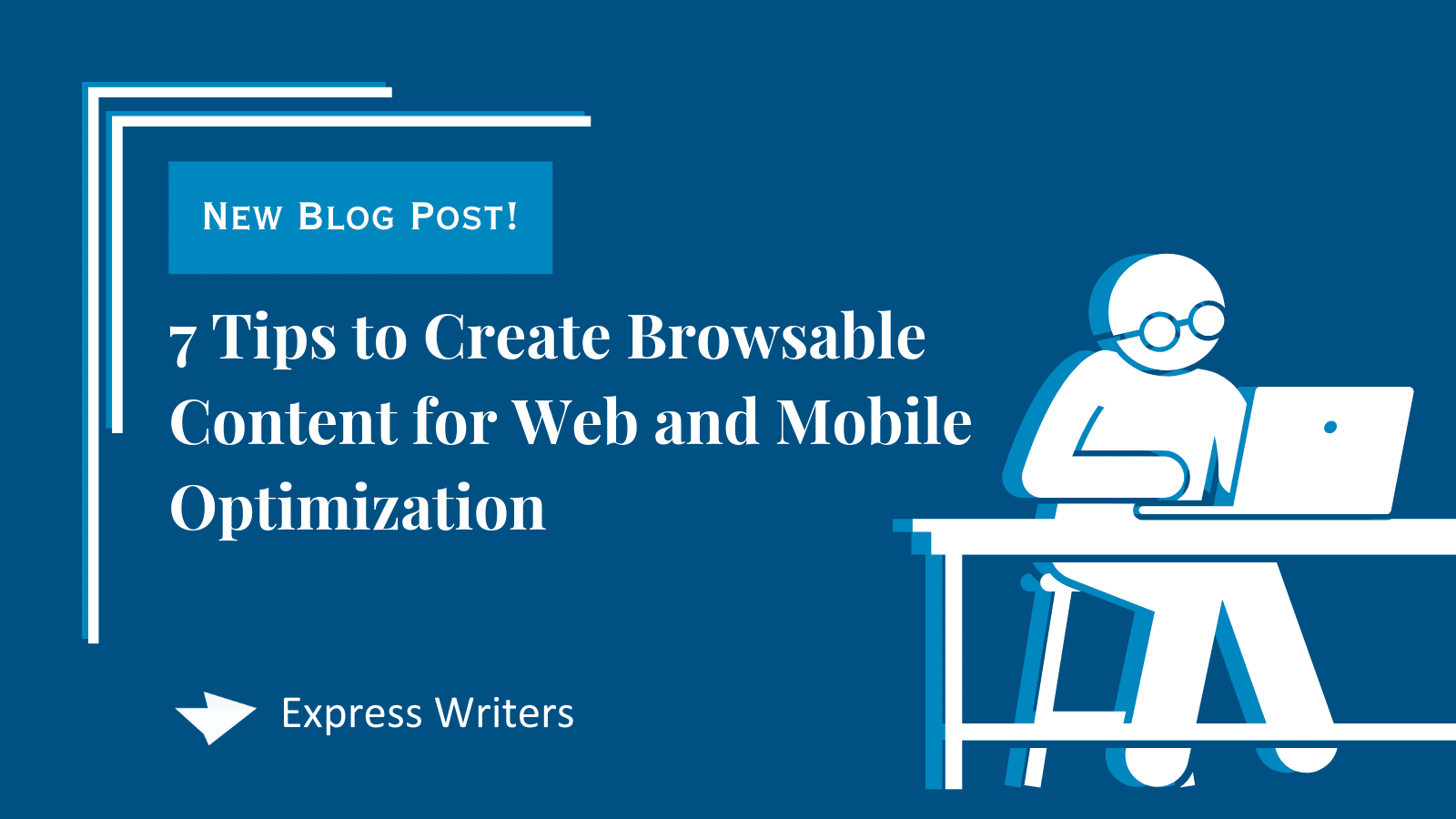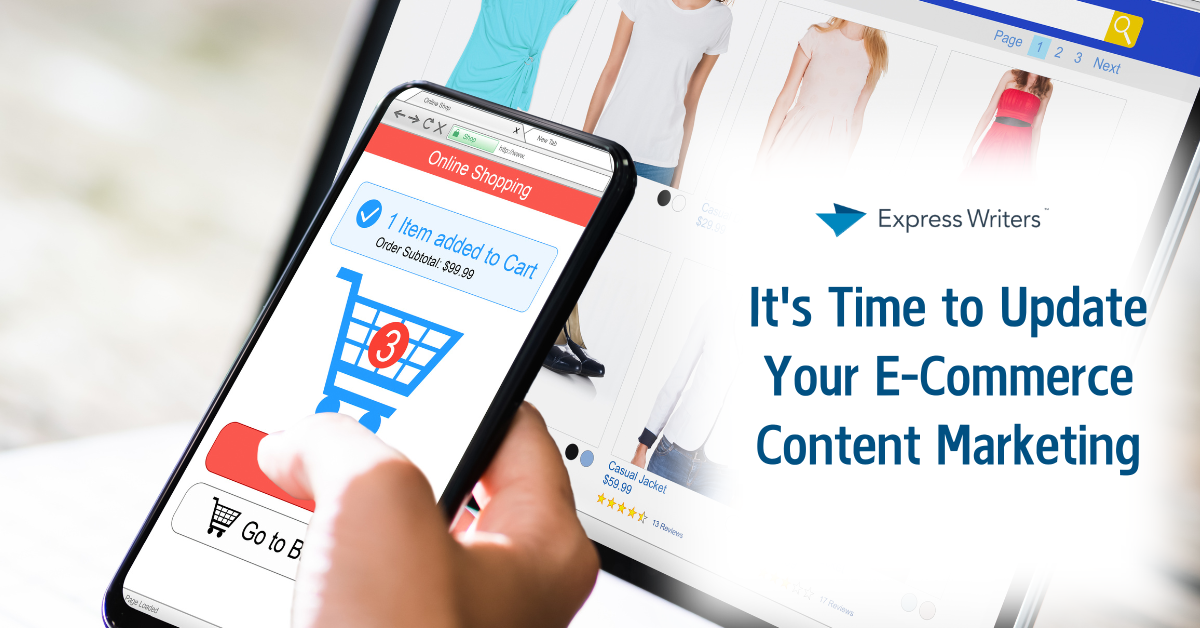7 Tips to Create Browsable Content for Web and Mobile Optimization
There is a very high chance you are reading these posts on your smartphone. Smartphone usage is increasing, right along with smartphone capabilities. Phones have changed so much over the years. In your teens or young adulthood, you most likely only used cell phones to make calls, send text messages, and play the game Snake. Now, you have the entire internet at your fingertips. Because smartphones act as computers for many uses, users are no longer only restricted to using a computer for their daily browsing. After all, why haul around a heavy laptop when you can shop, game, and browse on a lightweight smartphone? Browsing content on mobile devices comes with its unique challenges. Is your content prepared for mobile optimization? We’ll walk you through seven tips on how to optimize your website for mobile readers by making it more browsable. How Is Mobile Usage Changing Content Marketing? A startling 95% of the U.S. own a smartphone. By 2025, an estimated 72% of internet users will be using smartphones to access the internet. That means three in every four website visitors may be logging on from their phones. Mobile optimization for this change can take many forms. You’ll first want to look over the technical aspects of your site. Make sure your site runs on both web browsers and smartphone browsers. A crucial part of optimizing for smartphones is keeping your images, video, and other media small so they don’t bog down mobile devices. You will also want to ensure your smartphone navigation is easy to use. Once you have your technical details ironed out, it’s time to dig deeper into your content on the device and how people interact with content on their smartphones. Think of the last time you read an article on a smartphone. While you may have sat down to read the article thoroughly, much of phone usage includes scrolling and quickly browsing. The user may not even have a specific end goal in mind. When you want to access something on the laptop, you must be intentional about the process. After all, laptops aren’t convenient to pull out anytime to check a quick fact. Those who use laptops do so with a specific purpose. However, phones are accessible at all times. Because of how often your smartphone visitors might visit your site to browse rather than sit down and digest content, you will want your content to be easily digestible for readers who want quick snippets on the go. What Are the Benefits of Browsable Content for Mobile Optimization? You don’t need to target serious readers ready to study your 2,000-word blog post to succeed. Mobile optimization through browsable content has several benefits. These benefits are not just for those reading on a smartphone but also for people browsing on their computer. Readers Can Find Information Easily What is one of the easiest books to navigate? I would argue it’s the dictionary or an encyclopedia. All the information is divided into chapters and in an organized manner. You can search by topic and first letter to find what you need to know. Browsable content has an organization that allows users to quickly identify what they need without spending hours scanning your copy, making your content convenient for smartphone users. You Can Keep Your Audience Engaged Longer There is a widely cited fact that people have an attention span of just 8.25 seconds. This may feel accurate with how short everything is becoming in the world. Ads are shortening, people speed up their videos (we all know you do it for those Loom videos!), and the use of short-form videos like TikTok is becoming more popular. There is even evidence that filmmakers are shortening their shots in movies to hold the viewer’s attention longer. However, how accurate is that information? Netflix’s data shows a different story, as people can spend hours watching a show. Social media usage also reflects how long people spend scrolling. That’s because how you engage with content will drastically alter your attention span. That’s why you might have no problem binge-watching your favorite show on TV but struggle to read a financial report from your CFO. When you create browsable content, you help connect with the reader and hold their attention longer. It’s a more engaging format, especially if paired with top-quality content. Your Content Is Easier to Digest Having small sections of content broken up is easier for people to process. It’s like reading a book broken up with chapters where you can focus on one topic at a time, helping you absorb the information in small increments rather than all at once. Because people who browse content on mobile devices can do so from anywhere, distractions may often exist around them. They aren’t just reading your content in a home office on their computer. They could be watching TV, on a lunch break, or riding the metro to work. Keeping your content easy to absorb makes reading more convenient in busy environments and on the go. You Can Rank for Snippets Browsable content helps with reading and improves your search engine ranking. Google is also catching on that more and more people prefer bite-sized nuggets of information. That’s why you will see a People Also Ask section, and now Google offers an AI Overview. Both items pull snippets of information from online content so readers can find quick answers. When you create quick answers for your readers, Google can use those short, easy-to-digest answers in their snippets, improving your search engine ranking alongside your readability. 7 Mobile Optimization Tips to Create Browsable Content If you want the benefits of browsable content, use these seven tips to optimize your blogs for mobile and web browsing. 1. Add Frequent Headings Headings will be your best friend for browsable content. They are like your chapter headings that tell people what they can find in each section. Break up your content with frequent headings to make finding exact information easy. They can … Read more









